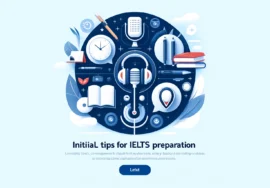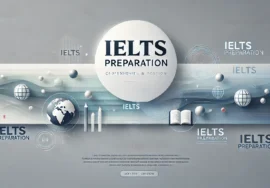
How to Write a Band 7+ IELTS Essay
Learn how to write an IELTS essay with a score of 7+ , including standard structure, key points, reviewing sample essays, generating ideas, and avoiding grammatical and vocabulary mistakes. Improve your IELTS score with this guide.
How to Write a Band 7+ IELTS Essay
The Writing section of the IELTS exam can be a challenging area for many test-takers, with a significant impact on their overall score.
Achieving a Band 7 or higher in the Writing section requires more than just good language skills; it demands a clear understanding of the task structure, effective organization of ideas, and the application of key strategies. In this article, we will explore the essential tips and techniques for writing a high-scoring IELTS essay.
We’ll begin by discussing the standard structure for Task 1 and Task 2, followed by critical tips for crafting a high-quality essay.
We will also review sample high-band responses to analyze what makes them successful. Additionally, we’ll address common grammatical and vocabulary mistakes, offering solutions to avoid these pitfalls. By following these strategies, test-takers will be better equipped to achieve their desired Band score and improve their overall IELTS writing performance.
1. Understanding the Standard Structure for Task 1 and Task 2

Task 1: Academic and General Training Differences
- Academic Task 1: Requires a structured report on a graph, table, chart, process, or map.
- General Training Task 1: Involves writing a formal, semi-formal, or informal letter in response to a given situation.
Structure for Academic Task 1:
- Introduction: Paraphrase the question and state the main trends.
- Overview: Highlight the key trends and significant features.
- Body Paragraphs: Provide detailed comparisons and descriptions of the data.
- Conclusion (optional): Summarize the key trends if necessary.
Structure for General Training Task 1:
- Salutation: Formal (Dear Sir/Madam) or informal (Hi John).
- Introduction: State the purpose of the letter.
- Main Body Paragraphs: Explain the situation with details and examples.
- Conclusion: Close the letter appropriately.
- Sign-off: Formal (Yours sincerely) or informal (Best regards).
Task 2: Opinion, Discussion, and Argumentative Essays
Regardless of the question type, a well-structured essay follows this pattern:
- Introduction: Paraphrase the topic and present your thesis statement.
- Body Paragraph 1: First supporting argument with examples.
- Body Paragraph 2: Second supporting argument with examples.
- Conclusion: Restate your opinion and summarize the main points.
2. Key Tips for Writing a High-Scoring Essay
- Understand the question type: Identify if it’s an opinion, discussion, or problem-solution essay.
- Use cohesive devices: Words like ‘however,’ ‘moreover,’ and ‘consequently’ improve coherence.
- Maintain a formal tone: Avoid contractions, slang, and overly casual expressions.
- Stay within the word limit: Task 1 requires 150+ words, and Task 2 requires 250+ words.
- Proofread your work: Check for errors in spelling, punctuation, and grammar.
3. Reviewing Sample High-Band Responses
Studying model essays is crucial for improving your writing skills. Analyze Band 7+ responses to understand:
- How ideas are developed
- The use of complex sentence structures
- Appropriate vocabulary choices
- Effective paragraph organization
4. How to Generate Ideas for Essay Topics
One common challenge in IELTS Writing Task 2 is coming up with strong ideas quickly. Here are some strategies:
- Mind Mapping: Create a visual diagram of ideas.
- Brainstorming: List related points before writing.
- Using Personal Experience: Draw from your own knowledge and background.
- Considering Both Sides: Even if you have a strong opinion, acknowledge counterarguments for balance.
5. Common Grammatical and Vocabulary Mistakes in Writing

Grammar Mistakes:
- Subject-verb agreement errors (e.g., “People is happy” → “People are happy”)
- Wrong prepositions (e.g., “Interested on science” → “Interested in science”)
- Misuse of articles (e.g., “She is a engineer” → “She is an engineer”)
- Word order issues (e.g., “Only he can do it” → “He can only do it”)
Vocabulary Mistakes:
- Repetitive words: Use synonyms instead of repeating the same word.
- Incorrect collocations: (e.g., “make a research” → “conduct research”)
- Using informal words: Avoid contractions (e.g., “gonna” → “going to”) and casual phrases.
6. Practicing Writing Under Exam Conditions
To improve, practice writing essays under timed conditions:
- Set a timer for 20 minutes (Task 1) and 40 minutes (Task 2).
- Avoid distractions and use only a pen and paper.
- After writing, review mistakes and identify areas for improvement.
7.Effective Time Management for IELTS Writing

-
- Allocating Time for Each Task: How to divide your time between planning, writing, and reviewing.
- Time Management for Task 1: Spend around 20 minutes for Task 1, focusing on analyzing the data and writing clearly.
- Time Management for Task 2: Devote around 40 minutes to Task 2, with 5-10 minutes for planning, 25-30 minutes for writing, and the rest for reviewing.
8.Developing Clear and Logical Arguments
-
- Use of Topic Sentences: Each paragraph should start with a clear topic sentence that sets the tone for the rest of the paragraph.
- Supporting Points and Examples: Make sure each argument is backed up with concrete examples, facts, or personal experiences where appropriate.
- Counterarguments: Addressing opposing views can demonstrate a well-rounded argument, especially in Task 2 essays.
9.The Importance of a Strong Introduction and Conclusion
-
- Introduction: Focus on clearly stating your position (if applicable) and paraphrasing the question. A strong introduction sets the direction of your essay.
- Conclusion: Avoid introducing new information in your conclusion. Instead, summarize the key points and restate your position or opinion.
10.Using Academic and Formal Language
-
- Avoiding Colloquialisms: IELTS Writing is formal, so avoid using slang or informal language.
- Using Academic Vocabulary: Demonstrate a strong vocabulary range by using formal words and phrases, without overcomplicating sentences.
- Linking Words and Phrases: Use connectors like “moreover,” “however,” “in addition,” and “for example” to ensure smooth transitions between ideas.
11.Understanding the Band Descriptors

-
-
One of the most crucial steps in achieving a Band 7+ score in IELTS Writing is understanding the IELTS Band Descriptors. These descriptors are the criteria that examiners use to assess your writing. Familiarity with these descriptors will help you understand exactly what is expected of you and guide you to tailor your writing to meet those expectations.
Key Criteria of the IELTS Writing Band Descriptors:
-
Task Achievement (TA):
- For Task 1: Your ability to select and present key information from the visual data (e.g., graphs, charts, or maps) and provide a clear, accurate summary.
- For Task 2: How well you address all parts of the task, develop a coherent argument, and support it with relevant examples and explanations.
- Band 7+ Expectation: Your response should fully answer the question, providing a clear and well-supported argument or description without missing any critical elements.
-
Coherence and Cohesion (CC):
- This refers to how logically your ideas are organized and how effectively they flow from one to the next. Proper use of paragraphs, clear topic sentences, and logical connections between ideas (using linking words) are key.
- Band 7+ Expectation: The essay should have a logical and easy-to-follow structure, with ideas well connected and paragraphs effectively organized.
-
Lexical Resource (LR):
- This measures the range of vocabulary you use and your ability to apply it accurately. Using varied, precise, and appropriate vocabulary helps demonstrate higher language proficiency.
- Band 7+ Expectation: You should demonstrate a wide range of vocabulary, avoiding repetition and using words correctly. While errors may still occur, they should not affect the meaning of the writing.
-
Grammatical Range and Accuracy (GRA):
- This assesses the variety and accuracy of the grammatical structures you use. Band 7+ writing includes a mix of simple and complex sentence structures and only minor errors in grammar.
- Band 7+ Expectation: You should display a variety of grammatical structures, with few errors in tenses, articles, prepositions, or subject-verb agreement. Complex sentence structures should be used effectively.
How to Use Band Descriptors to Improve Your Writing:
- Analyze High-Band Samples: By studying high-scoring responses, you can identify how these descriptors are applied in practice. Pay attention to how the arguments are structured, the variety in vocabulary, and the complexity of sentences.
- Self-Assessment: After writing an essay, try to evaluate it using the band descriptors. Does it meet the expectations for Task Achievement, Coherence and Cohesion, Lexical Resource, and Grammatical Range? This helps identify areas for improvement.
- Focus on Weak Areas: If you notice that your essay consistently lacks coherence or has limited vocabulary, focus your practice on improving these specific areas
-
-
Conclusion
Writing a Band 7+ essay in the IELTS exam requires a blend of strong language skills, effective essay structure, and a clear understanding of the task requirements.
By following the outlined strategies—such as using a clear introduction and conclusion, managing your time wisely, and avoiding common grammatical and vocabulary mistakes—test-takers can significantly improve their writing performance.
Practicing these techniques and analyzing high-band sample responses will help you refine your skills and boost your confidence in approaching both Task 1 and Task 2.
Remember, consistent practice and attention to detail are key to achieving your target Band score. With dedication and the right approach, a high IELTS Writing score is within reach.








